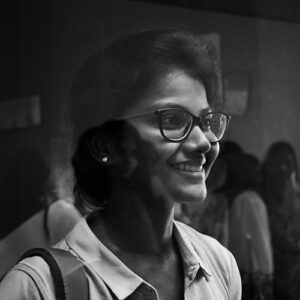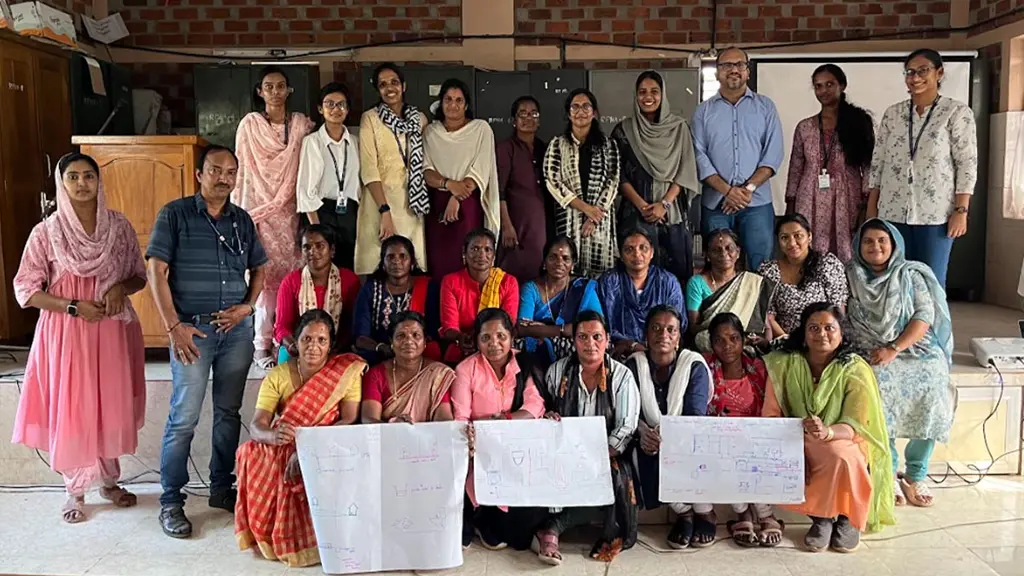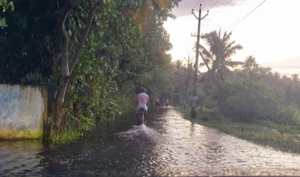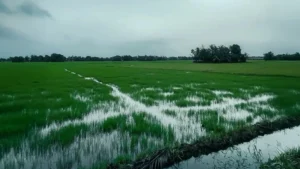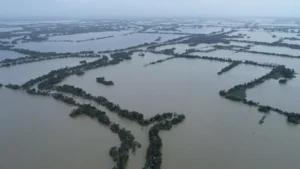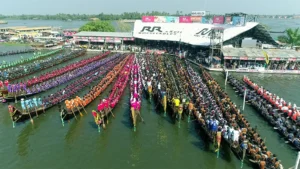We are delighted to share the success of our recent workshop titled ‘TOILET TIME- TOILET TALK.’ This innovative session aimed to gather aspirations from stakeholders regarding sanitation infrastructure, particularly in the context of frequent floods. The workshop was a part of the One Local Body One Idea (OLOI) project initiated by K-DISC (Kerala Development and Innovation Strategic Council), envisioning a competitive and inclusive Kerala through transformative innovations in technology, product, and process.
Ramankary Gram Panchayat, situated in the Kuttanad region of Alappuzha district, with the majority of its land below the mean sea level, faces unique challenges arising from latrine waste management and related issues in the context of flooding.
The one-day workshop, conducted on November 13, 2023, at Ramankary Panchayat Hall. We designed the workshop with a diverse audience in mind, including Kudumbasree members, Padashekara Committee members, Area Development Society (ADS) Workers, Ward Members, Masons, Septic Tank suppliers, desludging service providers, and Local Self Government Department (LSGD) Officers. The workshop witnessed enthusiastic engagement from stakeholders, including individuals affiliated with Kudumbasree, Padashekara Committee, HKS Members, and Ward Members. Notably, 74% of the participants were Haritha Karma Sena (HKS) members, making the workshop predominantly attended by female participants. The workshop involved residents from all wards, except Ward No. 5 and Ward No. 2.
The workshop was conducted with a clear focus on obtaining first-hand experiences in aspiration gathering. Key achievements included capturing people’s expectations, fostering innovative design thinking, ensuring public participation, and leveraging the expertise of local engineers for practical design solutions.
The workshop, structured into five sessions with various activities such as toilet term toss, storytelling, Sanitation Insight Quest, Toilet Design Essentials Poll, design stations, and feedback capture, received positive responses from participants. The outcomes were documented through written outputs and video, audio recordings.
To optimize the efficacy of the workshop, we undertook a series of preparatory activities. Commencing with a strategic meeting with the Panchayat President, we underscored the workshop’s significance by highlighting past achievements and positive outcomes derived from community participation in sanitation-related projects. We subsequently established a Planning Committee to organize and implement the workshop, comprising two ward members, the Panchayat President, LSGD Assistant Engineer, and Community Development Society (CDS) Chairperson. Key considerations from the committee included anticipating potential opposition from residents to new ideas and advocating for a centralized system as a pilot project in a common area. Actively seeking and considering suggestions and improvements from committee members proved instrumental in shaping our strategy. A mutually agreed-upon date for the workshop was chosen in a committee meeting, ensuring everyone’s convenience.
The workshop commenced with an introduction to the OLOI project and various K-DISC activities by Jairajan Sir, the State Coordinator for the OLOI Project, followed by an inspiring inaugural address from the President of Ramankary Panchayat.
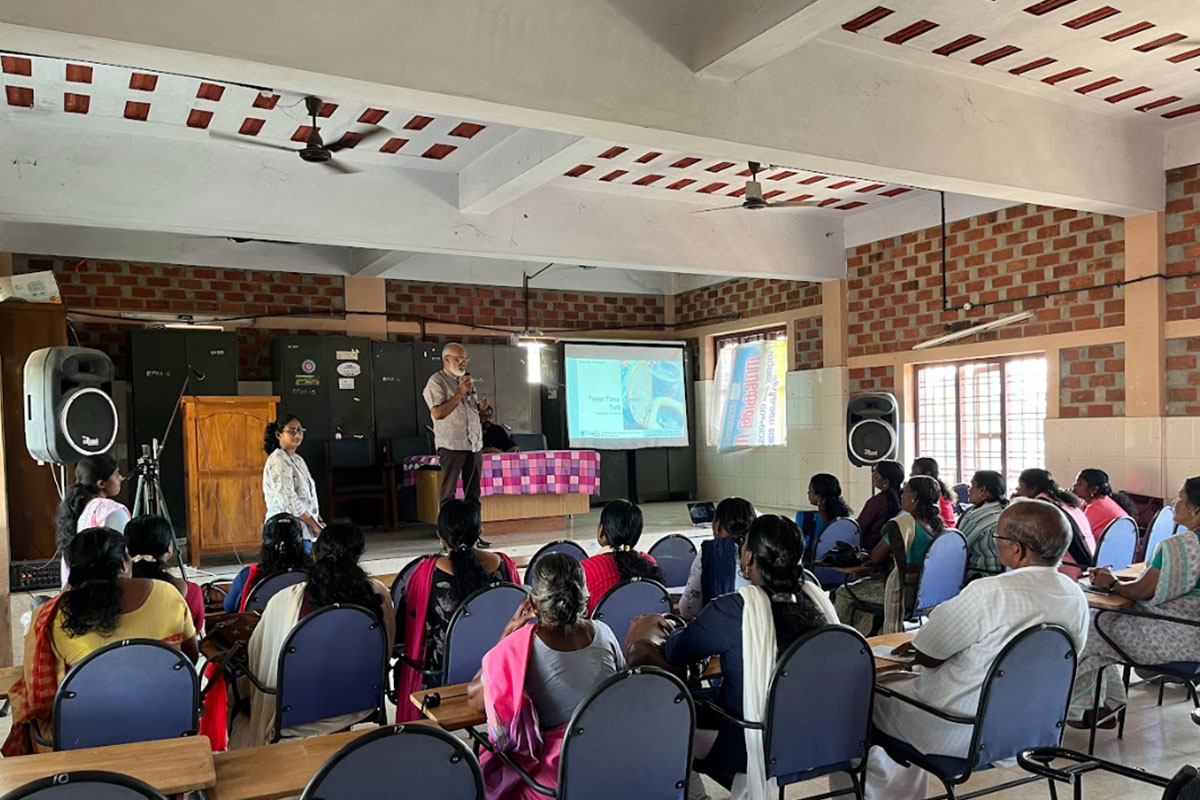
The initial workshop session kicked off with the “Toilet Term Toss” activity, where participants were encouraged to share a word or term related to toilets. The organized approach provided each participant with the opportunity to think, write, and share their perspectives. This activity ensured active engagement and involvement in the workshop, guaranteeing that each participant’s contribution was read, heard, and shared with all gathered participants. This stage aimed to foster an atmosphere of inclusivity for all participants in the upcoming procedures, encouraging everyone to share their valuable insights. The word cloud below represents the terms generated during this activity.

Many participants mentioned cleanliness as the initial thought about toilets. They also emphasized the challenges of the morning rush and family conflicts over toilet use, particularly involving children. Some highlighted aspects like color and physical condition, while others expressed concerns about maintenance and restoration of infrastructure damaged by heavy rain. The initiative effectively initiated conversations, breaking down the stigma associated with toilets and their functionalities.
The following session involved storytelling, where residents shared personal experiences related to floods and toilet use. This emotionally charged session featured a total of 8 stories, recounting everything from harrowing escapes during the 2018 floods to overcoming challenges. Participants detailed their struggles, including avoiding solid foods to prevent the need for toilet use. The narratives depicted the critical nature of toilet access, particularly for the elderly and children who lacked proper facilities during the floods. Stories included improvising open defecation methods, creating makeshift arrangements with buckets and ashes, and even constructing temporary rafts with plantain stems for children to defecate in the flood waters. The accounts vividly described the unhygienic floodwaters, their smell, and the challenges of navigating through them to reach higher ground. These stories underscored the urgent need for safe sanitation solutions during recurring floods, especially for children, the disabled, and the elderly.
The audience was separated into three groups according to their seating arrangement, and the ensuing activities occurred within each group. Volunteers were actively engaged in each group, providing assistance with the activities and documenting the procedures.
The third activity, called Sanitation Insight Quest, prompted residents to create a list of the different challenges they face with their existing sanitation infrastructure. Following this, a prioritization activity was carried out, allowing participants to rank the most critical issue. This method shed light on diverse perspectives, revealing varying perceptions of the most significant concerns among residents within the same Panchayat.

The subsequent activity, named Toilet Design Essentials Poll, closely resembled the previous one. In this activity, participants in each group were tasked with listing five things they deemed essential for their ideal toilet design. Following this, a prioritization activity was carried out, with groups ranking on the most crucial design features, as done previously. This exercise facilitated the identification of the community’s most significant aspects when it comes to toilet design.
After completing both of the mentioned activities, volunteers from each group shared a summary of their group’s priority list with the audience. This not only inspired the groups to enhance their performance but also heightened their active participation in the activities. Following this, everyone enjoyed a hearty lunch and took a break before regathering for the final activities, including the design station and the feedback session.
In the afternoon session, participants were reorganized into three groups, and design stations were established with chart papers and colored sketch pens provided. Each group was tasked with envisioning and designing a new toilet, incorporating solutions discussed in earlier sessions. While some residents attempted to draw and visualize on their own, others sought assistance from volunteers. The outcomes were tangible ideas and visualizations of a future where the discussed issues were either eliminated or minimized.
One group focused on the conceptual design of an affordable toilet, aiming for a budget under 1 lakh. They highlighted specific needs such as the area, type of water closet, requirements for an elevated pathway, placement of soapbox, hanger and pipes, leak-proof tanks, and biodegradable waste dispensers, along with overhead tanks ensuring water supply to the toilets. The other two groups explored diverse concepts, including floating toilets, portable toilets, the use of chemicals for faster and more efficient toilet waste management, separation of toilets and bathrooms in future designs, water filtration before water supply to toilets, and placing toilets outside but next to the house by sharing a wall.
They also addressed inadequacies in sanitation infrastructure in schools functioning as camps during floods, proposing additional toilets and expressing the need for larger septic tanks. The idea of a shared treatment system for multiple houses was discussed and drawn by one group, appreciating the potential placement away from wells and the relief it could provide for households lacking space for an Onsite Sanitation System (OSS). However, the other group dismissed this idea, pointing out limited space and a lack of cooperation among households that could potentially lead to its dysfunction.
The design sheets were then showcased to the LSGD Assistant Engineer, who joined the workshop at the conclusion of our design session. The engineer conveyed that numerous ideas discussed were practical, and several could be realized with improved technologies and advancements. Impressed by the diverse range of ideas and solutions visualized by the participants, he acknowledged the workshop’s significant role in aligning the administration and residents, thereby bridging existing gaps between the two groups.
In conclusion, the residents who have endured frequent floods and the associated sanitation challenges are crucial voices when defining the issues faced by the Panchayat. Listening to the residents during the workshop revealed that they possess valuable solutions and ideas for addressing their challenges, emphasizing that offering sufficient technical and financial support could play a significant role in resolving these issues. Moreover, the workshop not only addressed current challenges but also sparked opportunities for diverse innovations. Embracing innovation and change can be challenging, but workshops like this play a vital role in expanding perspectives and nurturing hope for a better future.
Author
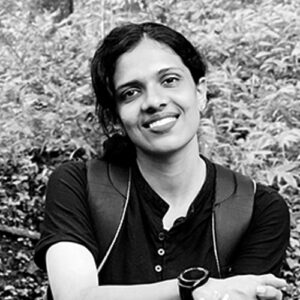
Alfiya A
Research Assistant,
Living lab alpy
